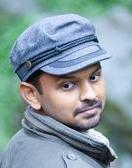Different countries have got various dance forms. Getting good pictures of the dancer requires sound knowledge of the dance form and good control over your camera. Dance photography demands a specific skillset from the photographer to get the best captures.
In this dance photography guide, I will share all the details about the camera gear that you need to capture beautiful dance photos. I will also share some tips that professional dance photographers use 
If you are a beginner looking to capture dance pictures, then you will find this guide really useful. Let us get started.
What is Dance Photography? 


Dance photography is a photography genre that involves photographing various dancers while they are performing different dance forms. It can be either a stage program where a dancer will be performing live. It can also be a photo shoot in a specific location with the dancer in their outfit showing different dance moves.
Certain dance forms involve only one dancer performing for the entire time. In the case of other dance forms, it will be a group event where many dancers will be performing at a time. Therefore, the photography techniques will differ for each of these types of dances.
Camera Gear for Dance Photography 

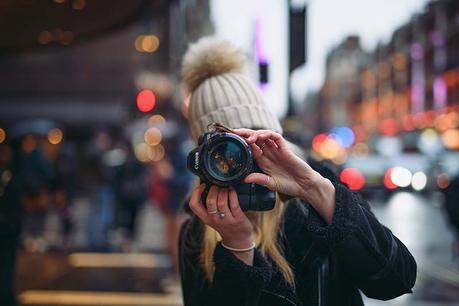
It is possible to use any camera for photographing dancers. But for best shots, always use a DSLR or a Mirrorless camera. Most of the staged dance programs happen either indoors or at night. So, you will have less light to work with. So, going for a full-frame camera body will help you to capture great shots. In addition, the better noise performance of a full-frame camera will help you shoot at high ISOs with very little noise.
When it comes to the lens part, you can use a prime or zoom lens. The problem with using a prime lens for dance photography is that sometimes the stage might be quite far from where you are standing. So, getting a good frame will be challenging since you have a constant focal length. The zoom lens will be handy here.
You can go for a zoom lens in the medium telephoto range. For example, a 70-200mm lens will be the perfect lens for dance photography. You can get this zoom lens in f/2.8 aperture as well as the f/4.0 aperture. This lens is available in both IS and non-IS versions. I strongly recommend going for the f/2.8 IS version since you are shooting handheld. It helps you to use slower shutter speeds.
If you plan to use a prime lens, you can go for a couple of lenses. The 85mm lens and a 200mm lens would be a good choice. You will have to swap between them if you are carrying a single camera body. You can also use these lenses with two separate camera bodies to avoid the lens switch during the shoot.
17 Pro Tips for Stunning Dance Photos 

1. Try Black and White

Some of the dance photos look good in black and white than in color. But I will not recommend capturing the dance picture in black and white. Instead, you can go for the color picture and record the file in RAW format.
Later, when you take these images for editing, you can easily convert the pictures to black and white with a click of a button. However, all the dance shots will not look good in monochrome. So, you need to apply it and see whether it looks good or not.
2. Use Slow Shutter Speed for Motion Blur

You can try to capture some creative shots along with the standard dance poses. One way to capture a creative image is to make use of the motion blur effect.
You will need a tripod to capture such images. So, if it is a staged event, you need to check and ensure that the use of a tripod is allowed or not.
The right shutter speed selection is the key to success for such images. You need to try different slow shutter speeds in the camera settings to get the motion blur effect on the picture.
3. Capture Silhouette

Photographing silhouette shots of the dancer is possible only if you are doing a portfolio shoot for the dancer. First, you need to get to a location where the sun comes behind the dancer to get a silhouette shot.
Beaches and mountain tops are some of the best places to try silhouette photography. You need to go to these locations during sunset or sunrise.
You can check in any weather apps to know the exact timings for the sunrise/ sunset and plan your photoshoot accordingly.
4. Freeze Mid-Air Shots
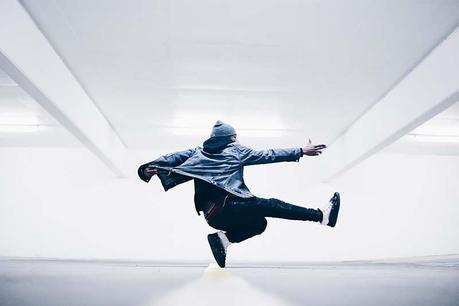
One of the best images to capture during a dance event or dancer photo shoot is to capture the mid-air freeze shots. You can use the shutter priority mode or the manual mode in the camera for such pictures.
You need to get a shutter speed of 1/1000 or higher to freeze such movements. You can use the burst mode in your camera to ensure that you get the perfect frame.
5. Capture Famous Poses

Every dance form will have some iconic poses.
So, as a photographer, you need to ensure to capture these poses. The artist will look really good in these dance poses.
6. Large f-number for Photographing a Group of Dancers
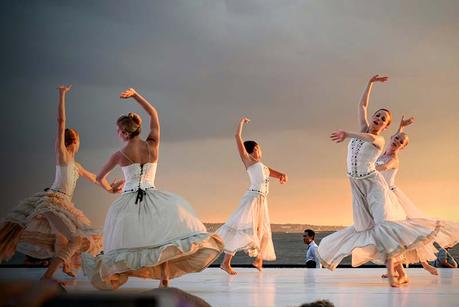
Sometimes, the dance shows can be a group event where many dancers perform on the stage. In these situations, you want all the dancers to be in focus in the shot unless you want the main performer only to stand out in the picture.
Here, you need to go for a higher f-number to get more depth of field so that all the dancers are in focus. These dancers will be positioned at different planes. You can’t go for a very high f-number because the amount of light available will be less since most of these events happen indoors or at night.
7. Go for a Low key image
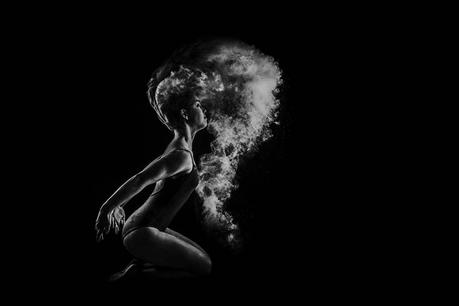
If you are doing dance photography at an event/stage, you can go for a low key image. It will help to make the dancer stand out in the frame.
You can avoid all the distractions in the background with the help of low key photography. The low keyframe ensures that the viewer’s attention is only on the dancer.
8. Shoot Wide Open For Individual Dancers
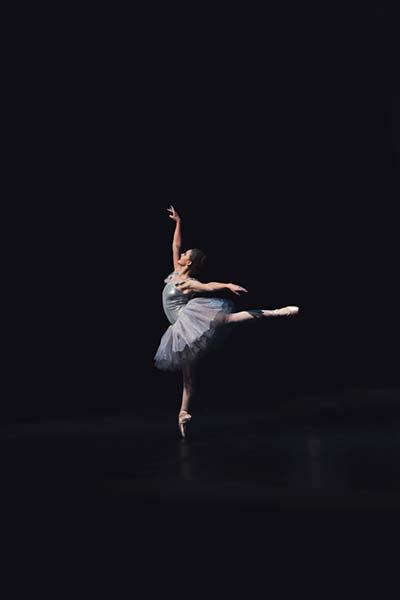
When you are shooting individual dancers, then it is better to shoot wide open. Select the lowest possible f0number supported by your camera lens. It will give you a nicely blurred background that helps make the dancer stand out from the rest of the crowd.
The large aperture value also helps you to get a higher shutter speed at low ISOs. Thus, you can easily freeze the dancer’s movement.
9. Find the Perfect Composition
Getting the image composition right is the key to the success of any photograph, so is the case with dance photography also. There are many composition techniques out there that you can try for this type of photography.
Some of the rules you can consider trying include the golden ratio, use of negative space, leading lines, rule of thirds, composing with colors, etc. Of course, whatever composition you choose, you must ensure that you do justice to the frame.
10. Pick the right location
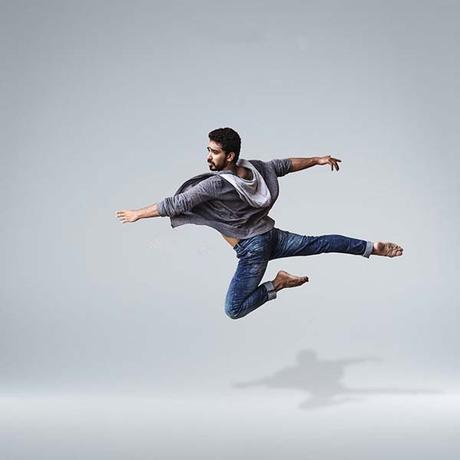
You may be capturing dance photographs for a magazine or the Instagram profile of the dancer. Here, as a photographer, you have the luxury of picking the location for the shoot.
You can go for a rural or urban setting. You can even use a forest patch to capture the images. The location needs to be selected so that it makes the photo more exciting and meaningful.
11. Choose the best outfit
Dancers will have multiple outfits. Therefore, it is a good idea to check with them and look at the different outfits. Then, you can select the dance costume so that it blends beautifully in the chosen location.
If it is a staged event, you will not have the option to select the dancer’s costume.
12. Practice
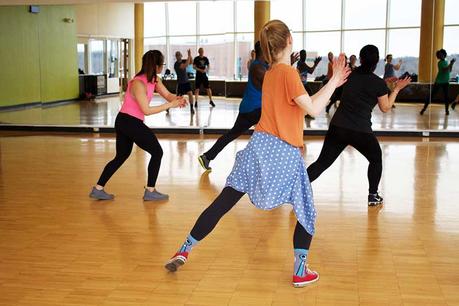
Like the dancer, as a dance photographer, you need lots of practice to become a good dance photographer.
So, whenever you get an opportunity to click dance photos, give it a try. It will help to improve your dance photography skills.
13. Good Communication with the Dance Performer
When you are doing a photoshoot with the dancer, it is good to have a friendly chit-chat with the dancer. It will help to capture better pictures.
The dancer will be able to show the best expression during each of the movements. You can also get suggestions from the dancer regarding different dance poses to capture.
14. Have a Good Understanding of the Dance Form
Sound knowledge of the dance form will help you to capture better dance photographs. In addition, understanding the dance form will help you to predict what is going to happen next.
Thus, you can be ready with the correct camera settings and framing to get the perfect shot. So, try to learn as much as possible about the dance form that you are going to shoot.
15. Shoot from the Right Perspective
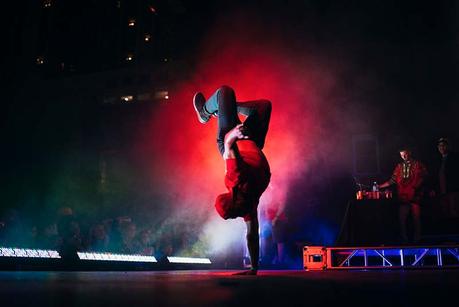
Getting the right perspective is another key thing in dance photography. Eye level photography works best on most occasions.
When it is a staged event, there will be lights that can hamper your shots from certain angles. So, you need to get your position right to get the lighting right on the performing artist.
16. Master your camera controls
Dance photography demands quick control over your camera settings. The dance moves can become faster at some point and slow at other times. So, you need to make the shutter speed adjustments accordingly.
You can even create custom modes in your camera with the required settings and switch between them.
17. Capture in RAW format
You will have to fine-tune the final picture to make it look more beautiful. You may have to do some amount of cropping also. Save the image in RAW format, and it will make the editing process easy for you.
The different colored lights during the dance create some issues with the white balance of the picture. However, you can quickly fix it if the image is recorded in RAW format.
You can also fix the sharpness and noise issues if any. There won’t be much loss of details if you use the RAW file for the edits instead of the JPEG.
